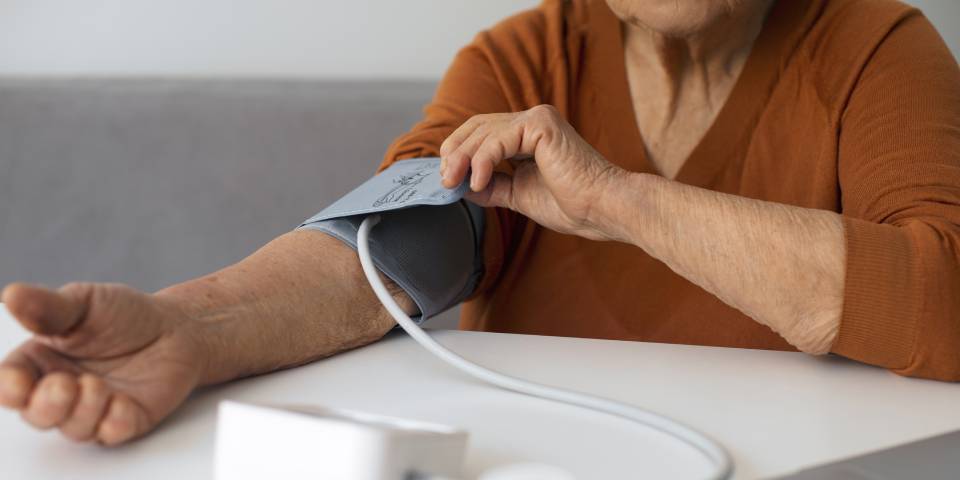The American Heart Association recommends home monitoring for all people with high blood pressure (BP) to help the doctor determine whether treatments are working.
How to use a home BP monitor?
- Be still: Don’t smoke, drink caffeinated beverages or exercise within 30 minutes before measuring your blood pressure. Empty your bladder and ensure at least 5 minutes of quiet rest before measurements.
- Sit correctly: Sit with your back straight and supported (on a dining chair, rather than a sofa). Your feet should be flat on the floor and your legs should not be crossed. Your arm should be supported on a flat surface (such as a table) with the upper arm at heart level. Make sure the bottom of the cuff is placed directly above the bend of the elbow.
- Don’t take the measurement over clothes.
- Measure at the same time every day. It’s important to take the readings at the same time each day, such as morning and evening. It is best to take the readings daily; however ideally beginning 2 weeks after a change in treatment and during the week before your next appointment.
- Take multiple readings and record the results. Each time you measure, take two or three readings one minute apart and record the results using a printable (PDF) tracker.
If you get a high BP reading
- A single high reading is not an immediate cause for alarm. If you get a reading that is slightly or moderately higher than normal, take your BP a few more times and consult your doctor to verify if there’ s a health concern or whether there may be any issues with your monitor.
- If your BP readings suddenly exceed 180/120 mm Hg, wait five minutes and test again. If your readings are still unusually high, contact your doctor immediately. You could be experiencing a hypertensive crisis.
- If your BP is higher than 180/120 mm Hg and you are experiencing signs of possible organ damage such as chest pain, shortness of breath, back pain, numbness/weakness, change in vision, difficulty speaking, do not wait to see if your pressure comes down on its own.
If you get a Low BP reading
- A single low reading is not an immediate cause for alarm. Take your BP a few more times and consult your doctor to verify if there’ s a health concern or whether there may be any issues with your monitor.
- If your BP readings suddenly exceed below 90/60 mm Hg persistently (even after five minutes) contact your doctor immediately. You could be experiencing a hypotension.
Three cautions while doing Self-Monitoring of BP
- Home monitoring (self-measured BP) is not a substitute for regular visits to your physician.
- If you have been prescribed medication to lower your BP, don’t stop taking your medication without consulting your doctor, even if your BP readings are in the normal range during home monitoring.
- Whenever you become sick, then check your blood pressure before taking medicines. If you find unusual BP readings consult doctor before taking medicines.







